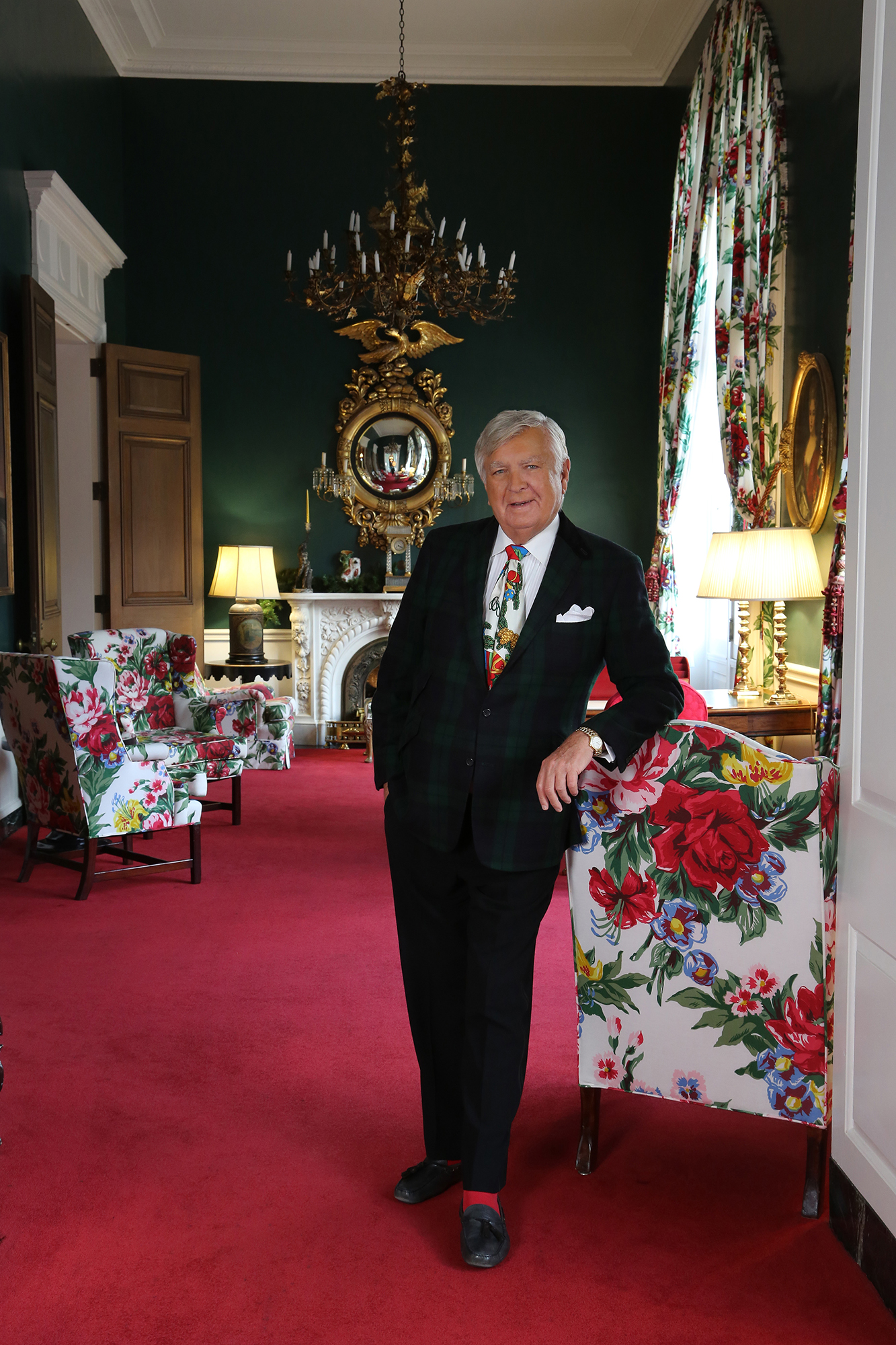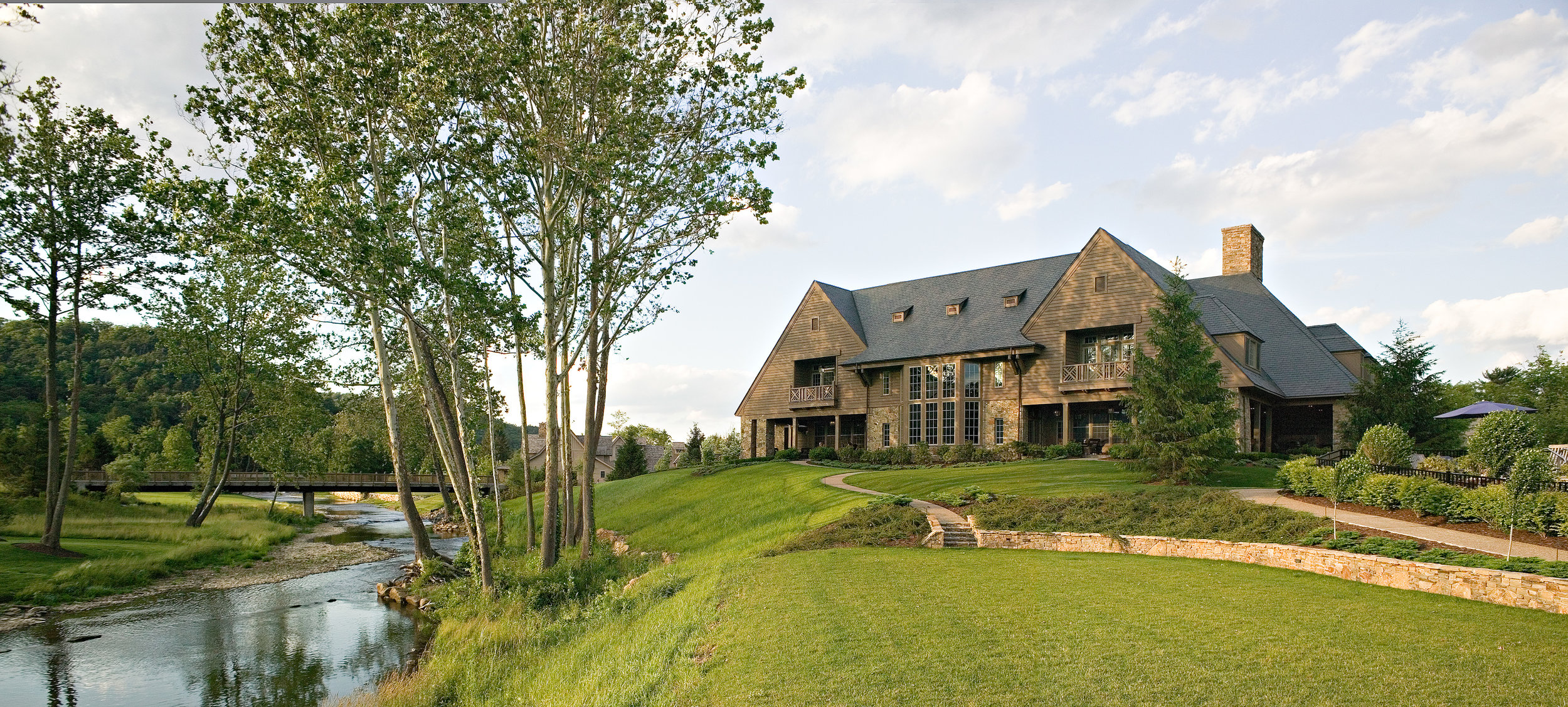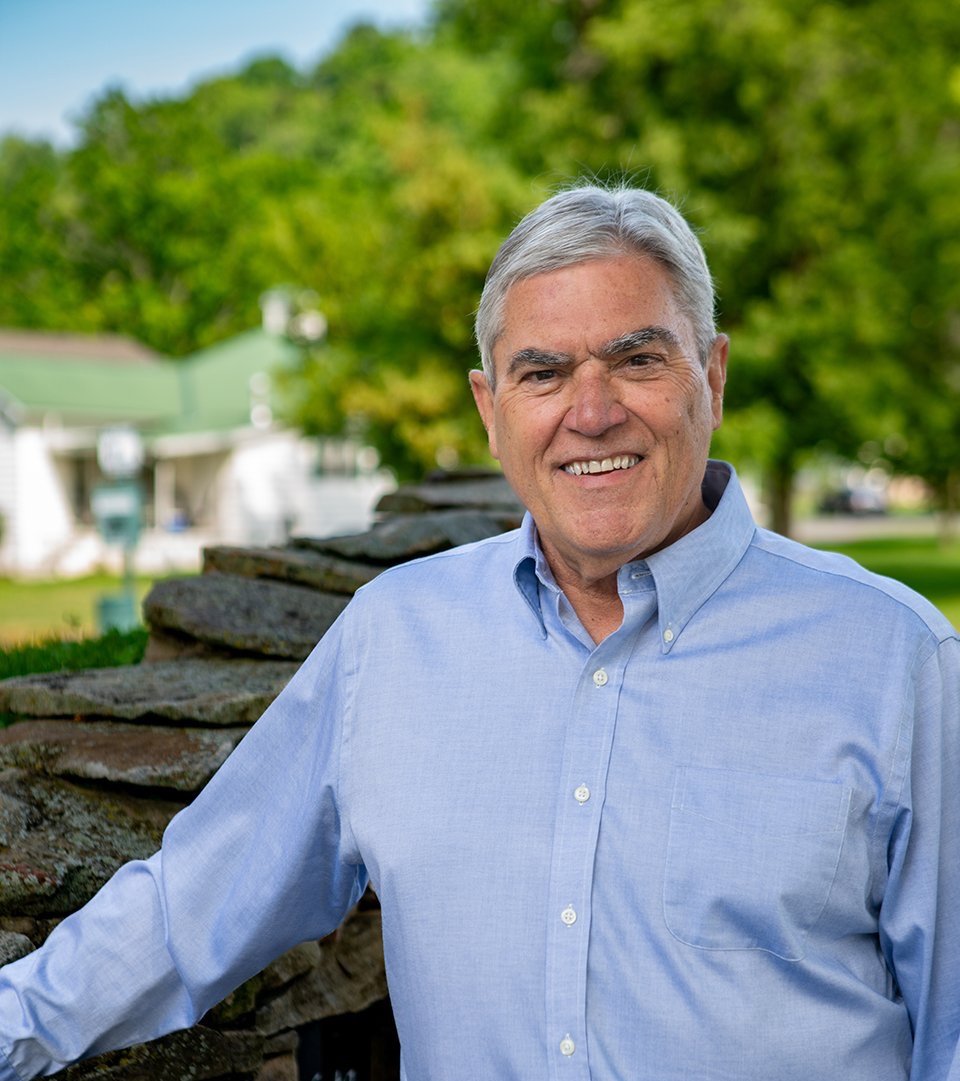A Hundred Years of Flowers

Story by Greg Johnson
Photos Courtesy of Gillespie Family
Gillespie’s Flowers and Productions celebrates a century of Business
In 1923 a young man named Ken Gillespie recognized a business opportunity at the then-new Greenbrier Hotel, and he opened a small flower shop in the resort’s retail corridor. He sold flowers he grew and arranged himself, or ones he could source that arrived at the train station across the street from the hotel. When business at the hotel slacked in the winter, he took his flower business south, to Florida. His children attended school there and helped out in the shop. Eventually his success enabled him to build a store on Main Street in White Sulphur Springs, on the property next to his house.
By the time his son Temp (Kenneth Templeton Gillespie) took over the business, the hotel had year-round business with conventions and trade shows, and it was no longer necessary to decamp to Florida. The business continued to grow, Temp put an addition on the shop, and he added rental items that groups needed for their conventions, like table and wall decorations.
Fast forward a hundred years, three generations and a third addition to the Main Street store, and Ken’s original vision has become Gillespie’s Flowers and Productions, a family business with 30 employees, 35,000 square feet of storage and work space, a high-tech graphics department, and a fleet of trucks, all based in White Sulphur Springs. For decades Gillespie’s has provided services for countless weddings, corporate events and celebrations at The Greenbrier and in the surrounding region. A unique combination of retail florist and event facilitator, Gillespie’s is run by three of Ken’s grandchildren, with the next generation working alongside, preparing to take over when they retire.
Relatively few family-owned businesses in the Greenbrier Valley can claim to have been operating successfully for a century. On the occasion of its hundredth anniversary, we thought it would be interesting to sit down with the owners, siblings John Gillespie, Martha Gillespie Sams and Charley Gillespie, and ask them about their company’s evolution from a small flower shop to an impressive enterprise with a vast inventory of tents, chairs, tables, lighting, flooring, portable bars, fire pits and just about anything else you might need for a major event.
GVQ: A lot of siblings don’t seem to be able work together as well as you three obviously do. Why do you think it works in your case?
John: I think all three of us are somewhat driven, and focused on outcomes. We want to achieve at a high level. We want things to go right. We’re each able to handle the whole operation, but we divide the duties. I handle most of the corporate and convention work, Martha handles the weddings, and Charley handles logistics and he schedules and manages the crew. It’s a lot like a family farm - it’s just always been part of our lives. We grew up with the business and we were expected to pitch in and help. I remember having to recruit my friends in eighth grade to help haul concrete for an addition we were building on the Main Street shop. My son Steven, Martha’s daughter Rebekah and Charley’s son Alex, work with us. They’re the fourth generation of the family with the potential to carry on the family tradition.
Martha: I’ve worked for the family since junior high school. We used to get huge shipments of flowers from Miami at the Lewisburg airport, and as soon as we got our driver’s licenses, we were dispatched to meet the planes and pick up the flowers. When I was studying accounting at WVU, one summer our bookkeeper had to take off and I kept the company books. WVU counted it as an internship and gave me college credit for it. I’m still handling the accounting and bookkeeping.
GVQ: What percentage of your business is flowers versus events?
Martha: It’s really hard to say because events involve flowers. We have seven floral designers on our staff, and there are times we have to produce 100 centerpieces for an occasion at the hotel, like New Year’s Eve. We’re always doing local funerals and weddings, too. Even with all the events we do, flowers are definitely a major part of our business.
GVQ: Where do you source your flowers?
John: Nowadays the flower market is worldwide. Some come from California, some from Holland, some from Columbia and Ecuador. South America has whole planes dedicated to shipping flowers to the States. Thailand is a great orchid producer. We used to get weekly shipments of anthuriums from Hawaii. Instead of arriving by plane or train or Greyhound bus like they used to, now they come UPS and FedEx. If we want a particular kind of rose from California, we can call in the afternoon and it’s here the next morning. There are still a couple of farmers in our area who raise flowers and plants, and we’re happy to buy product from them, too.
GVQ: Tell us about the event side of your business.
Charley: Events are a 7-day-a-week operation. We have 14-18 people on our crew. Because of the nature of the work, we can’t take regular days off. Sometimes we don’t get home until midnight after tear-downs. When we hire people, we let them know they’ll have to deal with flexible work hours, and they could be working Fridays, Saturdays, Sundays, Mondays, and nights. If someone needs to go to a medical appointment or deal with a family situation, we try to work around it. Our feeling about our employees is, since they take care of us, we’ll take care of them. We have an awesome crew. Several of them have been with us for many years.
GVQ: When did your expansion into events take place?
John: Our father, Temp Gillespie, started growing the production side of the business in the 1960’s. He built a small warehouse to store decorations and props for parties and conventions. At that point we were still outsourcing tents and tables and chairs. In the 1980’s, after an experience with a subcontractor who forgot to bring a part for a tent, Dad decided the only way we could control things was if we had our own tent. The demand kept growing, and we kept adding larger tents and more tables and chairs. We’re still adding.
Charley: Our new sailcloth tent is a hot item. It’s large and it has peaks and flags on the top, like a festival tent. Brides love the way it looks. We have other tents that don’t need poles inside to hold them up, so there’s more room to move around and more space for tables and chairs. We had to learn how to set the sailcloth tent up, but it’s been worth the investment of time and money.
John: One interesting difference between our generation and our father’s is that he didn’t believe in borrowing to expand. He grew it organically over time. We’ve been willing to take on debt to grow the business.
Charley: We built a 20,000 square-foot warehouse to store all the tents and chairs and miscellaneous things we need. We have a stake driving machine, which saves the crew from having to sledge stakes by hand and speeds up the setup process. We even have a tent washing machine. The temperature has to be precise because if it’s too hot the binding on the seams comes apart. We’ve learned the hard way that washing a tent isn’t nearly as hard as drying one!
Martha: During the pandemic, tents and rentals helped us survive. We continued to have weddings because Greenbrier County had fewer restrictions than some other places. We planned one very large wedding for a couple who were going to get married in Washington, D.C., but wedding receptions weren’t being allowed there. Tents enabled us to have it here. The hotel could have indoor receptions in the ballroom if there were 6 or fewer people at each table and the tables were 10 feet apart, so that helped. In 2022 weddings and corporate business started coming back. We handled over 100 weddings last year. The addition of the chapel has dramatically increased the number of weddings we have at The Greenbrier. On any given weekend we could have two weddings at the hotel and one at the Sporting Club. Believe it or not, we even had weddings on Christmas Eve and Christmas Day.
GVQ: Do you do much work for the Sporting Club?
John: We take care of a lot of events for the Sporting Club and its membership. Besides helping the Sporting Club and the hotel decorate for Christmas and take down the decorations, some Sporting Club homeowners want help with Christmas decorating, too.
GVQ: People probably don’t realize Gillespie’s does graphic design work, too.
Martha: We have an excellent full-time graphic designer, Ryan Foster. We do The Greenbrier’s custom poster printing. We can create signs and decals, and we can print on Foamcore and aluminum panels. We even do vehicle decals.
John: Honestly, we can print just about anything. When they had the red-carpet premiere for the Fox Nation movie that was filmed at The Greenbrier, we did a 100-foot wall graphic for the background.
GVQ: Do you serve areas besides Greenbrier County?
John: We handle events at The Omni Homestead in Hot Springs, Snowshoe, Glade Springs, private homes, and occasionally events in Charleston and Roanoke.
Martha: We worked on the inaugurations in Charleston for Governors Underwood and Wise, and the one at The Greenbrier for Governor Justice.
GVQ: Carleton Varney’s death last year was a great loss to The Greenbrier. Did you do much work with Carleton?
John: We worked a lot with Carleton. He was an amazing visionary, and he loved flowers. Dorothy Draper and Company are continuing to work with the hotel, and we work with them.
GVQ: Did the 2016 flood impact your business?
Martha: Luckily, our shop and our warehouse weren’t flooded, so we could devote time to the recovery effort in White Sulphur. Initially we provided tents and tables. Eventually the outdoor operation moved to Butler Hall at St. Thomas Episcopal Church. Everyone in the community was helping out. I helped coordinate logistics and pay bills, and I was a volunteer case manager.
Charley: My nephew Steven helped with a rescue. We’ll let him tell you about it.
Steven: A Baltimore company had a crew of 10 or 15 workers setting up tents for the PGA Tournament when the flood happened. They were living in a rented house on Greenbrier Avenue for the month they were here, and we were about the only people in town they knew. Their neighborhood flooded and they were literally surrounded by water and trapped in the house. Some of them couldn’t swim and they were scared to death. It was getting dark and some fast water rescue people got them out. We put them in our trucks and took them to Butler Hall because we knew they could get shelter and food there.
GVQ: They were lucky.
Steven: We were glad we could help. They were just here doing their job and suddenly they were caught in the middle of all the chaos.
GVQ: How do young people who want to pursue your line of work get into it?
Martha: There are horticulture degrees, and you can even learn a lot online, but most people still learn it hands-on. Most of what I learned, my grandfather taught me.
John: It’s interesting how things come back around. Granddad used chicken wire in his floral arrangements. Over the years that got replaced by floral foam. But it’s not environmentally friendly because it’s not biodegradable. So there’s a movement back to chicken wire now!
GVQ: One final question. What are your favorite parts of your jobs?
Martha: The creativity. I enjoy helping brides bring their visions to fruition, and helping corporate clients decide on their themes and décor.
John: I love the challenge of the event design and execution.
Charley: It’s easy to come to work when you’re blessed with great employees.







